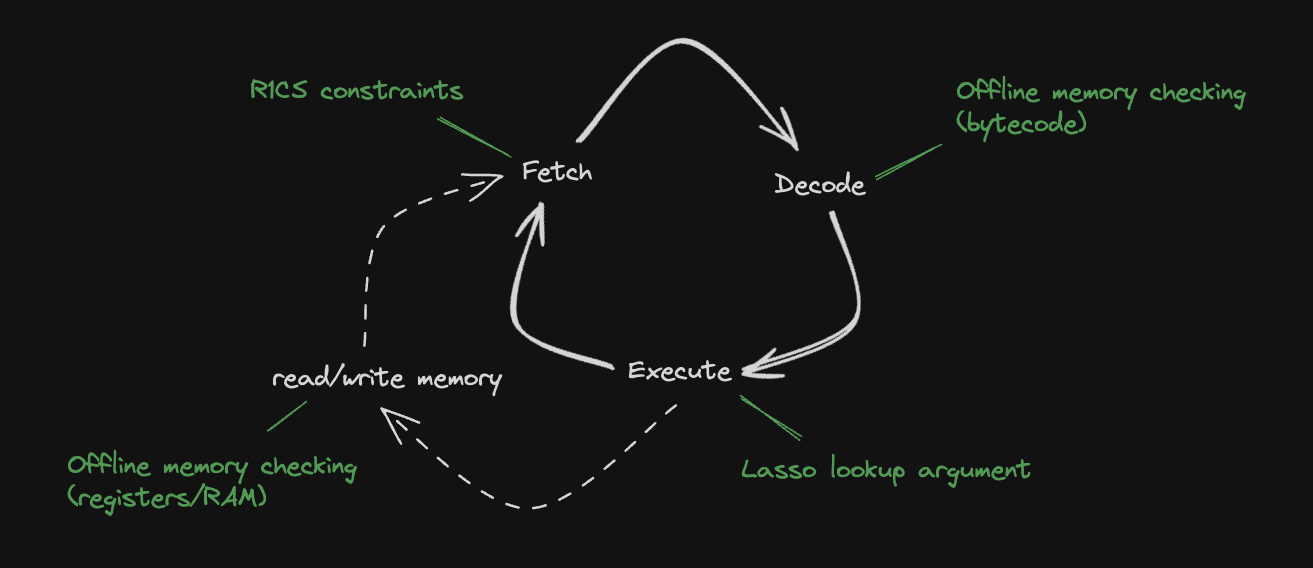Jolt
This section gives an overview of the core components of Jolt.
Jolt's four components
A VM does two things:
- Repeatedly execute the fetch-decode-execute logic of its instruction set architecture.
- Perform reads and writes to Random Access Memory (RAM).
The Jolt paper depicts these two tasks mapped to three components in the final Jolt proof:

The Jolt codebase is similarly organized, but instead separates read-write memory (comprising registers and RAM) from program code (aka bytecode, which is read-only), for a total of four components:

Read-write memory
To handle reads/writes to RAM (and registers) Jolt uses a memory checking argument from Spice, which is closely related to Lasso itself. They are both based on "offline memory checking" techniques, the main difference being that Lasso supports read-only memory while Spice supports read-write memory, making it slightly more expensive. This is implemented in read_write_memory.rs.
For more details: Read-write memory
R1CS constraints
To handle the "fetch" part of the fetch-decode-execute loop, there is a minimal R1CS instance (about 60 constraints per cycle of the RISC-V VM). These constraints handle program counter (PC) updates and serves as the "glue" enforcing consistency between polynomials used in the components below. Jolt uses Spartan, optimized for the highly-structured nature of the constraint system (e.g., the R1CS constraint matrices are block-diagonal with blocks of size only about 60 x 80). This is implemented in jolt-core/src/r1cs.
For more details: R1CS constraints
Instruction lookups
To handle the "execute" part of the fetch-decode-execute loop, Jolt invokes the Lasso lookup argument. The lookup argument maps every instruction (including its operands) to its output. This is implemented in instruction_lookups.rs.
For more details: Instruction lookups
Bytecode
To handle the "decode" part of the fetch-decode-execute loop, Jolt uses another instance of (read-only) offline memory-checking, similar to Lasso. The bytecode of the guest program is "decoded" in preprocessing, and the prover subsequently invokes offline memory-checking on the sequence of reads from this decoded bytecode corresponding to the execution trace being proven. This is implemented in bytecode.rs.
For more details: Bytecode